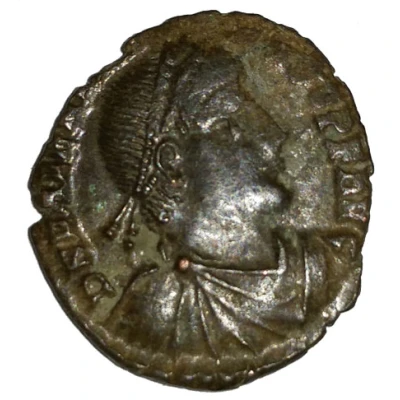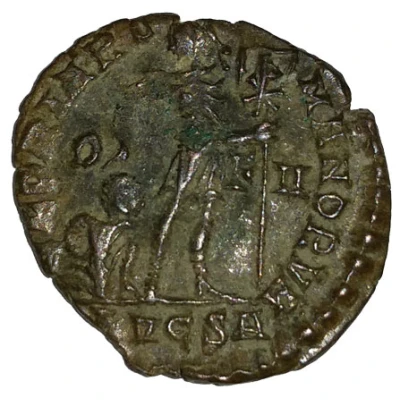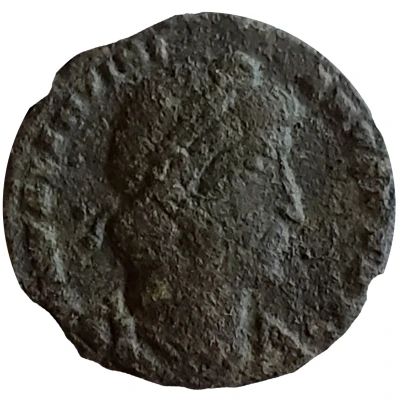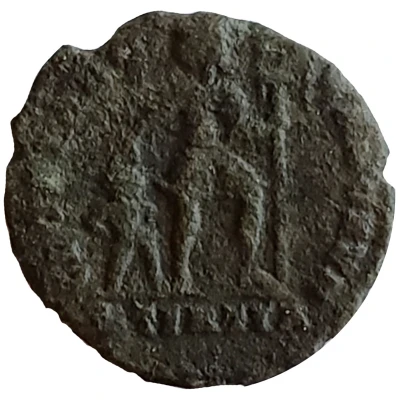


© pejounet (CC BY-NC-SA)
Follis - Valentinian I GLORIA ROMANORVM; Lugdunum
| Bronze | 2 g | 18 mm |
| Issuer | Rome › Roman Empire (27 BC - 395 AD) |
|---|---|
| Emperor | Valentinian I (364-375) |
| Type | Standard circulation coin |
| Years | 367-375 |
| Value | Follis (1⁄180) |
| Currency | Solidus, Reform of Constantine (AD 310/324 – 395) |
| Composition | Bronze |
| Weight | 2 g |
| Diameter | 18 mm |
| Thickness | 2.5 mm |
| Shape | Round (irregular) |
| Technique | Hammered |
| Orientation | Variable alignment ↺ |
| Demonetized | Yes |
| Updated | 2024-10-04 |
| Numista | N#103167 |
|---|---|
| Rarity index | 76% |
Reverse
Emperor advancing right, holding labarum in left hand and dragging captive by hair behind him with right hand.
Field-marks: O (left field), F-II (right field) across the labarum.
Script: Latin
Lettering:
GLORIA ROMANORVM
OF II
LVGSM
Unabridged legend:
Gloria Romanorum
Oficina secunda
Lugduniensis Sacra Moneta
Translation:
Glory of the Romans
Second officina
Sacred Mint of Lugdunum
Edge
Plain
Comment
The labarum is a military standard displaying the Chi-Rho symbol ☧, a christogram formed from the first two Greek letters of the word "Christ" - Chi (χ) and Rho (ρ). Its first use is attributed to Constantine the Great.Various field-marks/officina combinations exist for Lugdunum mint.
Interesting fact
One interesting fact about the Follis - Valentinian I coin is that it features the first Roman Emperor to be depicted with a beard on a coin. Valentinian I, who ruled from 364 to 375 AD, was known for his distinctive beard, which was seen as a symbol of his wisdom and authority. The inclusion of the beard on the coin was a departure from the traditional clean-shaven image of Roman Emperors and reflected the growing influence of Christianity, which emphasized the importance of beards as a symbol of masculinity and spirituality.

